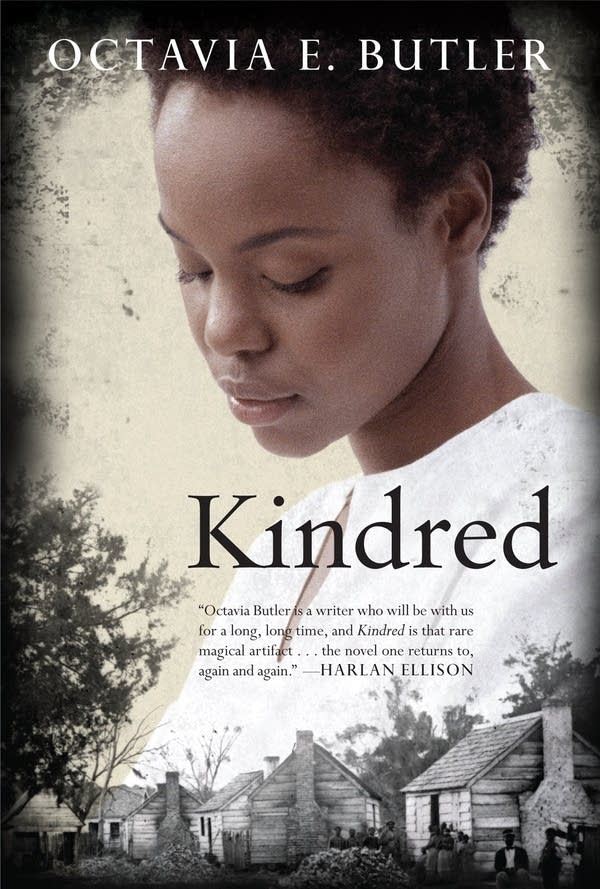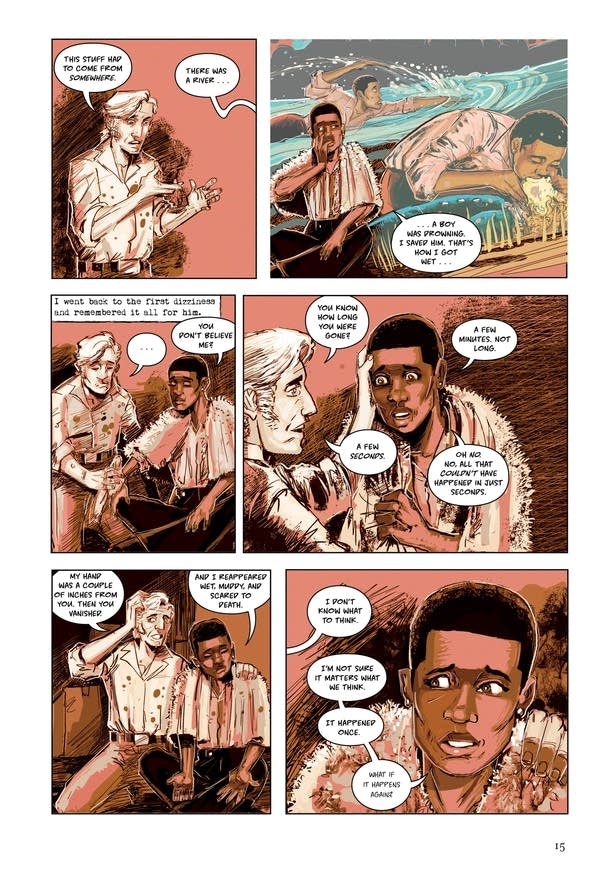Octavia Butler's 'Kindred' gets a graphic novel adaptation
Go Deeper.
Create an account or log in to save stories.
Like this?
Thanks for liking this story! We have added it to a list of your favorite stories.

One minute you're standing in your living room — the next you're 150 years in the past. You're time-traveling, but you can't control it. You're jerked out of the world you know and dropped into one you don't.
That's the plot of Octavia Butler's most famous novel, "Kindred," which has now been transformed into a graphic novel.
The story follows Dana, an aspiring writer in 1970s California who is transported back to antebellum Maryland, to the plantation where her own ancestors live. She uncovers the violent acts behind her family tree — but she can't interrupt them without erasing her own existence.
First published in 1979, "Kindred" could be called an undercover classic. Lots of people love it; even more have never heard of it.
Turn Up Your Support
MPR News helps you turn down the noise and build shared understanding. Turn up your support for this public resource and keep trusted journalism accessible to all.
The same could be said about Butler herself. Her work won big awards in the 1980s and '90s — both the Hugo and the Nebula — but she isn't as well-known as other sci-fi legends. She died in 2006, at age 58.
"She is so underappreciated. She should be as famous as [Isaac] Asimov or anyone else," Damian Duffy said.
Duffy and John Jennings are the comic artists behind the "Kindred" graphic novel, which was released last month. Both avid Butler fans, they hope the new release — and the new format — will raise Butler's profile for a new audience.
Butler was the first black sci-fi author that Jennings ever read.
He went to a historically black university — Jackson State in Mississippi — but there was a lot of "stigma around speculative fiction," Jennings said. "We were just reading traditional Harlem Renaissance writers."
After graduating, he picked up one of Butler's novels, and he was hooked.
Butler herself knew she stood out when she started publishing. She was black, and a woman, writing about time travel and vampires and dark dystopias in her novels.
In a 1991 interview, she was asked if she knew any other black women writing in her genre.
"I don't know any black women who write science fiction," she said. "Lots of white women, but I don't know any black women — which is not to say there aren't any. But I don't know any."
The power of Butler's works comes in the way she weaves fantastical elements with straightforward discussions on race, gender and the ownership of history, Duffy said.

For Duffy and Jennings, "Kindred" captured all of that: It's a time-travel story that shows the brutality, and the legacy, of slavery. Butler herself called it a "grim fantasy."
"America's history of racial injustice doesn't go away if you ignore it," Duffy said. "Butler said she wanted the novel to be a way for readers to feel history, and not to have a dusty history-book view of things. She wanted to make it a visceral experience: These are real things that happened to real people. How would you act in these situations?"
Adapting a book so infused with historical violence was a daunting, draining task, Jennings said. It took its toll on him as an artist.
In one scene he drew, Dana hides in the woods outside the cabin of a free black woman, still unsure of where she has landed or why. She watches in horror as a white man whips the black woman on the ground while her young daughter watches. It's one of the first moments that Dana realizes the danger she's truly in, as she puzzles out her surroundings.
"I was literally weeping onto the original art as I drew it," Jennings said. "I colored that palette last, because each time you are sketching, you're making it more and more realistic. It's really torturing yourself to see this thing over and over again."
Duffy and Jennings struggled with the question of how much violence to show, especially when graphic novels have a reputation for cartoonish or gratuitous violence. Butler struggled with that question herself. She said her own portrayal of violence "Kindred" wasn't as brutal as what truly happened to slaves.
Duffy rewrote the scenes of violence again and again, trying to get them right. "The point of the book is to be very frank and honest about the real violence that happened to people," he said.
Adapting "Kindred" into the finished 240-page graphic novel took 15 months, with Duffy and Jennings emailing pages back and forth. The Butler estate signed off on the final work, which was a relief for them — messing with the words of an icon is an intimidating job.
They are now at work on new comics projects, in addition to their day jobs in academia. Duffy teaches at the University of Illinois at Urbana-Champaign, Jennings at the University of California, Riverside.
They hope the graphic novel will open doors for readers, into all of Butler's other books.
"I hope people pick it up and use it as a portal to read more of Octavia Butler. And from there, start reading the people who are so influenced by her, like Nnedi Okorafor, Nalo Hopkinson, N.K. Jemisin," Jennings said. "[Butler] inspired a whole generation of writers and dreamers."
Excerpt: "Kindred: The Graphic Novel" by Octavia Butler








